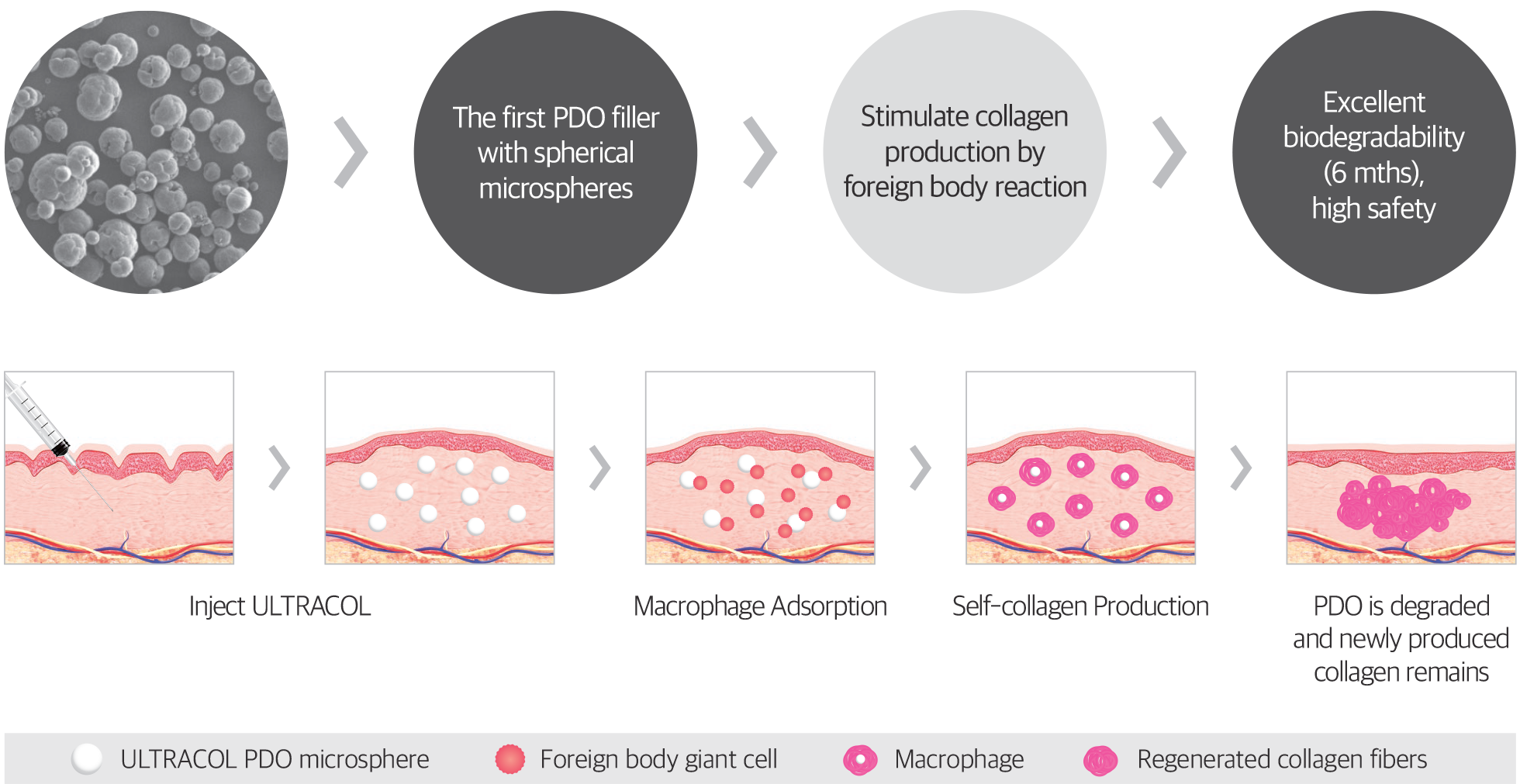Introducing Ultracol, the world’s first microparticle dermal filler made with polydioxanone (PDO), a trusted material used in sutures for over 30 years. This innovative product boasts a unique, patented, and certified technology, ensuring a safe application with minimal side effects. Ultracol delivers impressive and long-lasting results.
What makes Ultracol special? Ultracol utilizes a groundbreaking technology that transforms over 1400 PDO threads into microparticles. These particles are then combined with carboxymethylcellulose, a highly safe and biocompatible substance commonly found in food and medications. This carrier material acts as a binding agent, preventing unwanted clumping.
Collagen Stimulation Effect
Comparison on volume with HA filler
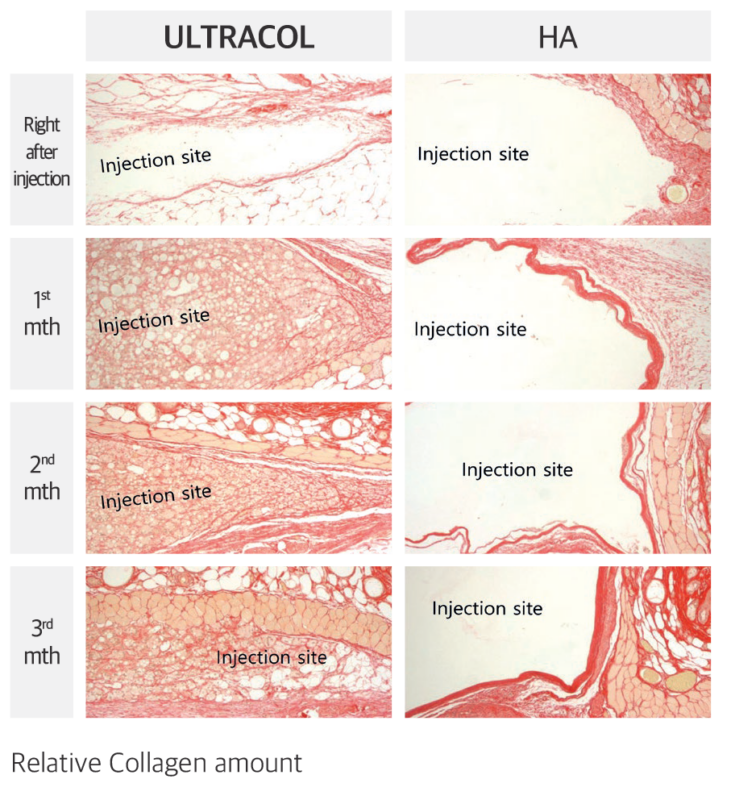
ULTRACOL | Collagen is produced densely around
PDO microspheres
HA | Collagen is produced only around the HA filler
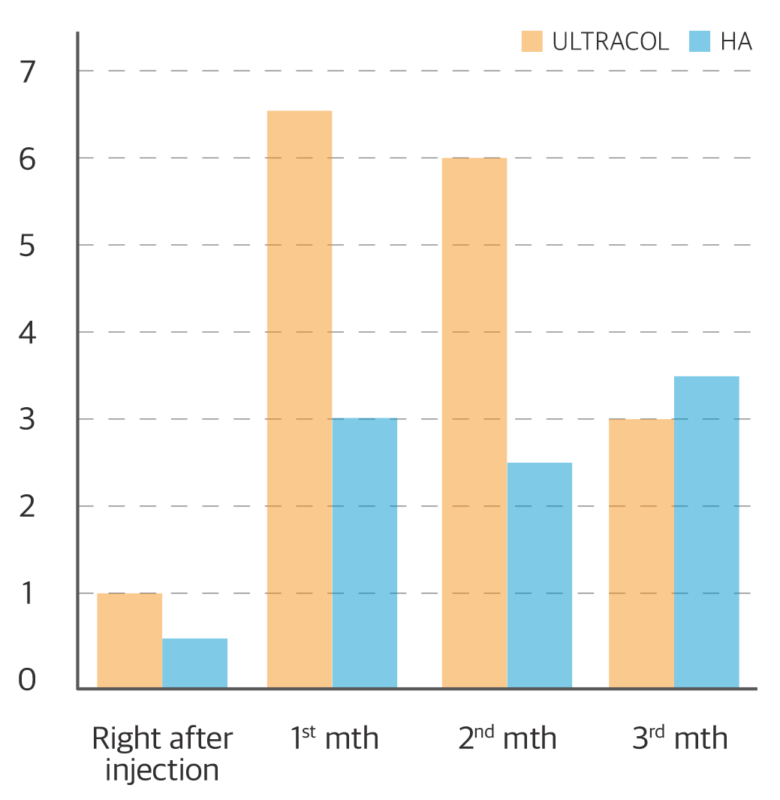
- 2 times higher production of collagen compared to HA filler in 1-2 mths
- Superior than HA filler regarding collagen production
Maintenance period of improved dermal density, wrinkles, and skin radiance
Dermal Density(%)
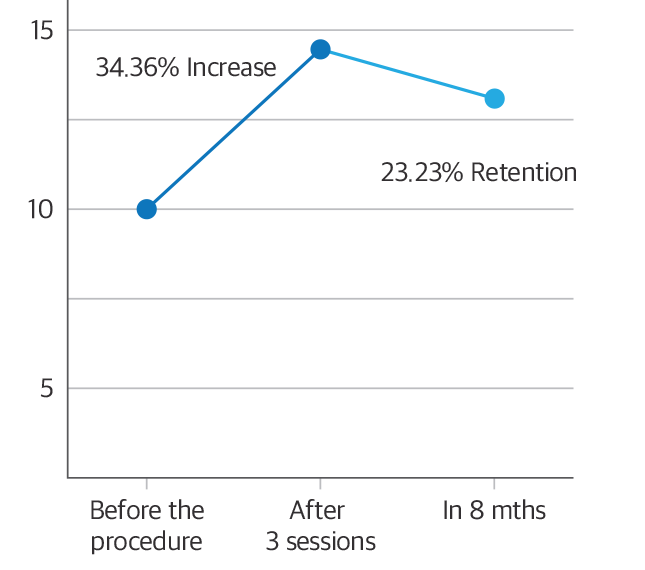
Before the procedure 11.04
After 3 sessions 14.72
In 8 mths 13.69
Wrinkle Index(A.U.)
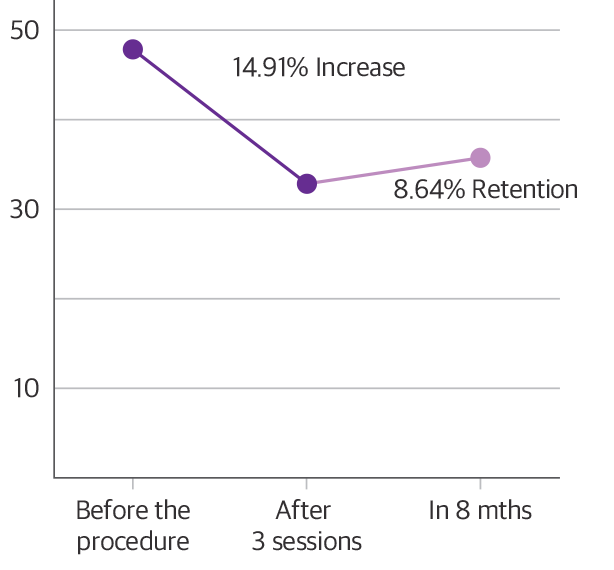
Before the procedure 40.17
After 3 sessions 33.99
In 8 mths 34.59
Skin Radiance(SGU)
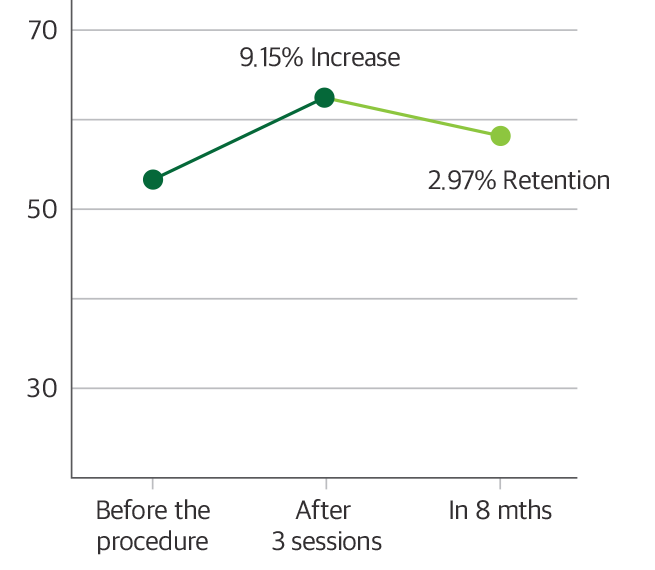
Before the procedure 55.67
After 3 sessions 60.80
In 8 mths 57.20
Collagen Booster
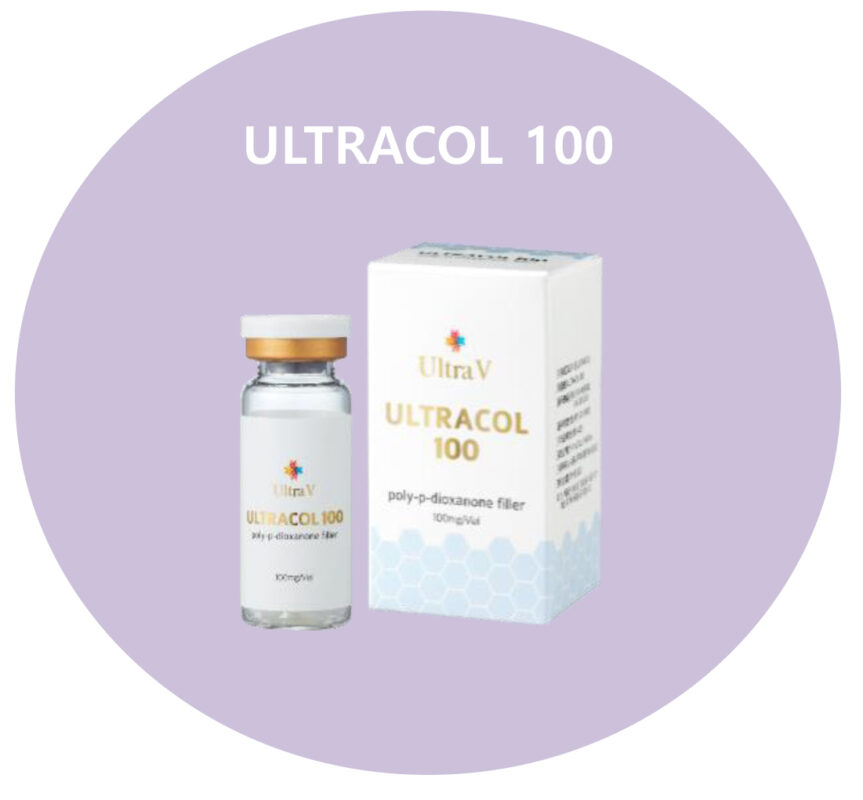
Ingredients : 100mg(PDO80mg + CMC20mg)
Injection Method: Multi injector 29~32G
Volume & Lifting
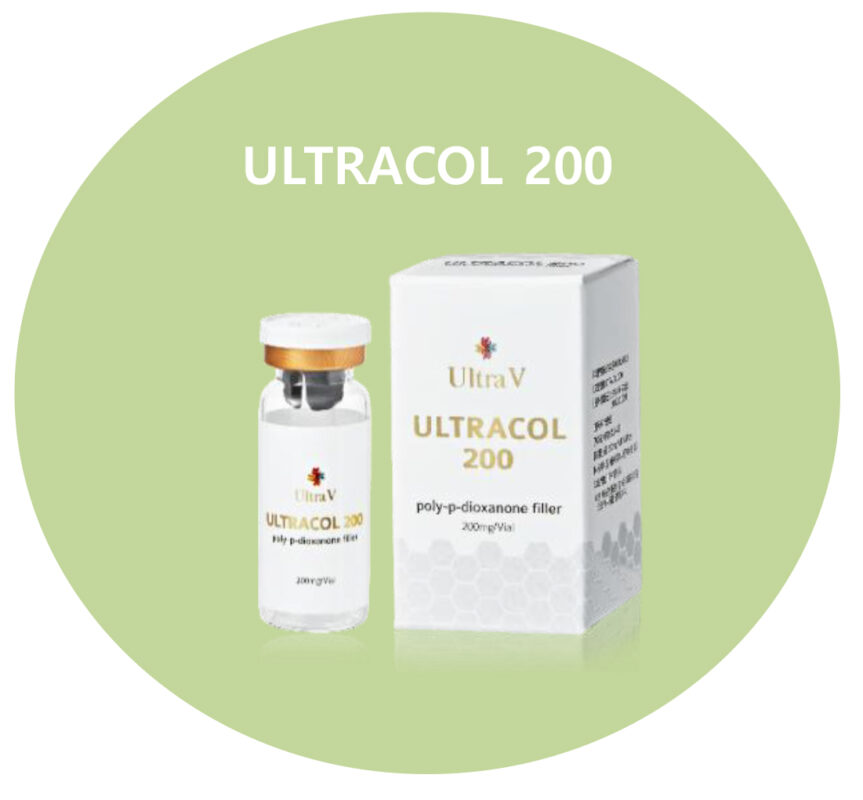
Ingredients : 200mg(PDO180mg + CMC20mg)
Injection Method : Cannula 21~23G
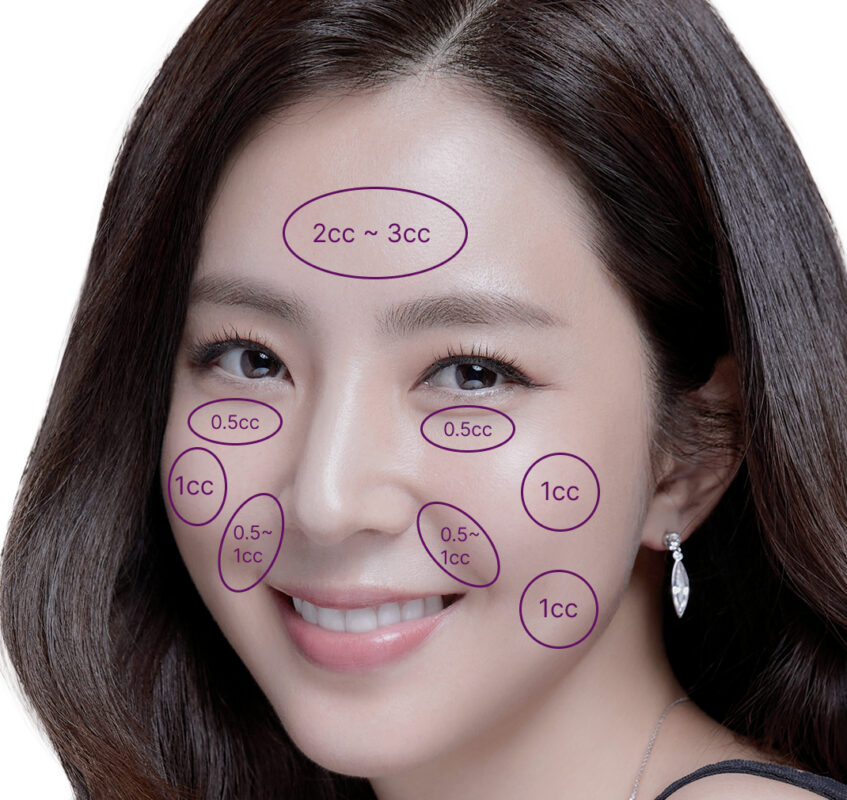
21G / 23G Cannula Injection
Ultra Col 1 vial
+
Sterialized Distilled water 3cc
+
Lidocaine with epinephrine 1cc
Why Ultracol?
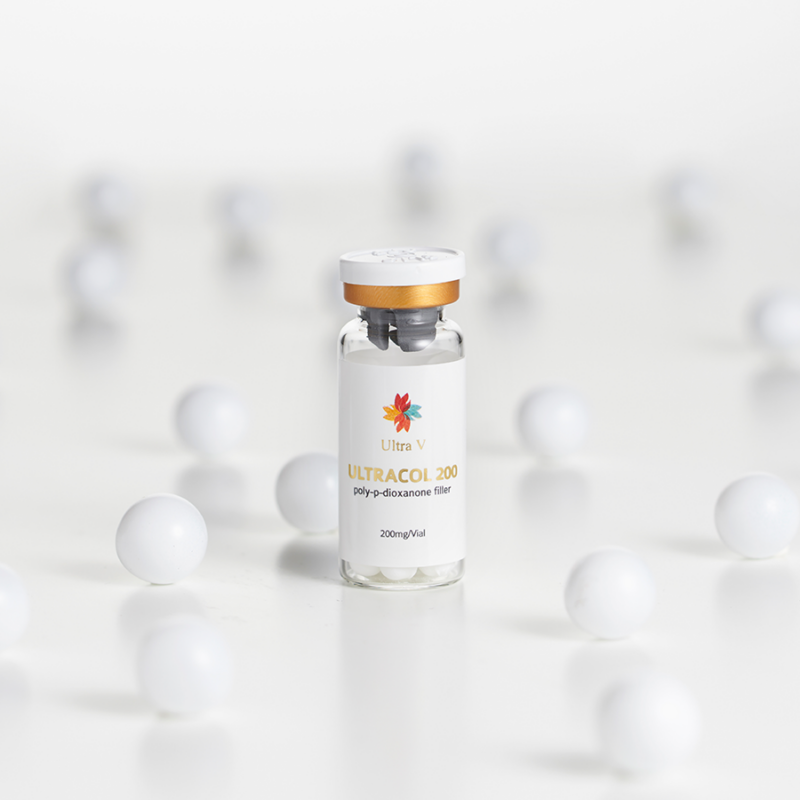
World Debut
Ultracol is recognized as the inaugural PDO (Polydioxanone) filler globally, being the world’s first and only PDO filler approved by the KFDA.
Safe
The safety of PDO has been established for more than three decades, having been utilized as surgical suture material across many countries worldwide. Its safety and biodegradability are recognized globally.
Economical
In terms of its collagen-stimulating effect, one ampoule of UltraCol (200mg) is equivalent to approximately 1400 PDO mono threads (Mono 29G 38/50mm).
Innovative
Revolutionary microtechnology distinguishes UltraCol as the world’s first and only microparticle filler utilizing polydioxanone. Its unique technology ensures safe application with minimal side effects.
FAQ
How should I dilute Ultracol?
Basic dilution : Distilled sterilized water 3cc + Lidocaine 1cc (total 4cc)
Until when should I use Ultracol after dilution?
It is the best to use it all right after dilution. If you can not use it all, you need to keep it refrigerated and use it as soon as possible. Shake it enough to mix solution well when you re-use.
(Air injection during dilution may cause bacterial infection.)
Which gauge needle should I use?
We recommend you to puncture with 20G needle and use 21G~25G cannula for injection.
When can I see the effect after treatment?
You can see improvement of skin tone after treatment. After 4weeks, you can see natural volume through collagen stimulation.
What kind of side effects can be seen?
PDO is a safety-approved material that is used for more than 30 years in the world. Therefore, Safety and biodegradability of PDO are well recognized globally. Allergic and inflammatory reaction may occur in some cases. In that case you need to prescribe Phenyramine and NSAID. We recommend you to always prescribe antibiotics after procedure.
How long is ideal interval time for Ultracol treatment?
Collagen stimulation and regeneration continues for 2~12weeks, and PDO eventually degrades 6months after the treatment. We recommend you to undergo another Ultracol treatment in 3~5months for longer effect.
PDO degrades faster than Scultra(PLLA) or Ellanse(PCL). Is it less effective than them?
It takes 4~8 weeks for the collagen to be produced. And the long or longer presence of PCL and PLLA components inside the skin does not mean collagen production takes place continuously. Rather, the risk of side effects such as Nodule, paternity, and inflammatory reactions increases.
Which part of the face can I treat?
You can do treatment all over the area of face. Since there are no side effects, the thin skin area can be treated as well. You can usually treat forehead wrinkles, under eye wrinkles and nasolabial folds. The injection layer is the dermis and subcutaneous layer.
What is action mechanism of Ultracol?
2~2.5million PDO Microspheres produces Collagen in dermis layer. It gives natural lifting effect and improvement of wrinkle and skin tone.
What is difference between PDO threads and PDO powder filler?
PDO threads degrade after 6months and produces Collagen in dermis layer. PDO Thread lifting is safe and effective treatment as well since it’s composed with PDO which is safe material. Ultracol PDO filler functions as same as PDO threads. 2millions PDO microspheres has same surface area with 1,400pcs of PDO mono threads. And it reduces treatment time, pain of patients, inflammatory reaction and treatment cost.
In case of Sculptra and Ellanse, don’t they cause the side effect of nodule, granuloma?
In case of PLLA and PCL, it takes about 2 years to be degraded completely. For this reason, the possibility of side effect like nodule and granuloma might be higher than Ultracol. When repeated treatment is done, the possibility of side effect will be much more increased because they will be overlapped with the undegraded powder. Sometimes they are not degraded after 2 years and then it is necessary to remove by operation.
What is different from HA Filler?
HA filler is generally most used filler. However, composition of Hyaluronic acid is very low as only 2% and 98% is BDDE, which is cross-linker. BDDE has the possibility of danger since it has toxicity. In addition, HA filler has the strong character to pull water and it is advantageous to maintain the shape as viscosity of gel type. On the other hand, it has high risk of necrosis if it blocks or moves in the blood vessel. HA filler has the side effect that it is not degraded or skin is uneven after 1 year when large amount is injected. Therefore removal operation is reported frequently.
HA Filler can be dissolved by Hyaluronidase . How about Ultra Col?
The size of PDO Microsphere of Ultracol is average 50μm so the nodule does not occur. During 8~12 weeks after treatment it produces collagen and PDO degrades in 6months. Therefore you do not need to dissolve it. It is similar with Botox that its mechanism of action is short and side effect is low.
Which gauge of needle should be used when adding distilled sterilized water to Ultracol?
You should use 20G needle. If you use 18G, foreign substance might be added.
HA Filler is safe because it can be dissolved. Is Ultracol possible to dissolve?
When blood vessels are blocked by HA filler or excessive volume is injected, Hyaluronidase is used to remove HA filler. However, Ultracol does not have risk to block blood vessels. It is not necessary to dissolve it because it just stimulates collagen through PDO microspheres in dermal layer to create natural volume. Sculptra and Ellanse take more than 2 years to be degraded, resulting in side effects and removal by operation. However, PDO is much safer than PCL and PLLA because it is degraded within 3~6 months completely.
When injecting Ultracol in forehead or under eyes, as it is liquid state, how does it stay in injected area?
PDO is hydrophilic. When injecting, it is adsorbed onto dermal layer immediately and stays well in injected area, not flowing.
Isn’t the price of Ultracol expensive?
Comparing the composition of Sculptra and Ellanse, Ultra Col contains 3 times more particles. Also, surface area of one vial of Ultracol is equivalent to 1,400pcs of PDO Mono threads. Therefore it is cost-effective product comparing to Sculptra or Ellanse.
Since PDO in Ultracol is microsphere, does it degrade faster than other fillers?
PDO is not a surface erosion, but a bulk erosion that hydrolyzes over a certain period of time. After 4~8 weeks which is required for collagen production, it safely degrades and disappears within 3-6 months without any inflammatory reaction.
Isn't the price high comparing with AestheFill?
AestheFill is a PLA filler in a porous spherical shape. Due to the porous structure, it can not maintain the spherical shape and become broken or clumped state. It is difficult to produce effective collagen.
It seems that I have seen PDO filler of another brand.
There is another Korean PDO filler product manufactured by physical shredding. However, there are reports that the inflammatory reaction is severe due to the sharp crushed surface. And it can not be used in Korea as it is an unlicensed product in Korea. Ultracol is the world’s first and only product of PDO Microsphere type with Korean license.

